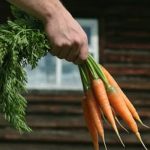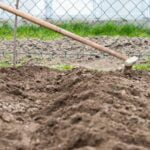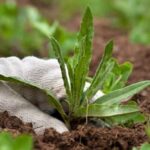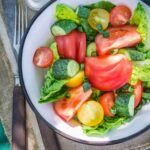Are you interested in starting your own vegetable garden but don’t know where to begin? Look no further. This article will serve as a dummies guide to vegetable gardening, providing you with all the information you need to get started on your gardening journey. Whether you have a green thumb or have never even picked up a trowel before, this beginner’s guide will walk you through the basics of creating and maintaining a successful vegetable garden.
You may be wondering where to start with your new vegetable garden. In this introductory section, we will cover the essential aspects of beginning a vegetable garden.
We will explore how to select the best location for your garden, the tools and supplies you’ll need, how to choose the right vegetables for your space, preparing the soil for planting, and much more. By the time you finish reading this guide, you’ll feel confident in your ability to start and maintain a thriving vegetable garden.
With the helpful tips and guidelines found in this article, you’ll gain insight into not only how to grow vegetables successfully but also how to harvest them and enjoy the fruits of your labor. Whether it’s seasonal gardening or dealing with pests and diseases, we’ve got all bases covered. So let’s dive in and learn about the fulfilling world of vegetable gardening.
Choosing the Best Location for Your Vegetable Garden
When starting a vegetable garden, one of the most crucial decisions you will make is choosing the right location. The success of your garden depends largely on this choice, so it’s important to carefully consider several factors before breaking ground.
First, consider the amount of sunlight the area receives. Most vegetables need at least 6 hours of direct sunlight each day to thrive. Take note of any trees or structures that may cast shadows over your chosen location and plan accordingly.
Next, think about access to water. Vegetables need consistent watering, especially during dry periods, so it’s essential to have a water source nearby. Consider how you will irrigate your garden and whether you will need hoses or sprinklers.
Finally, consider the quality of the soil in your chosen location. While soil can be amended with organic matter and fertilizers, it’s best to start with a good foundation. Test your soil for pH levels and nutrient content to determine if any improvements are needed before planting.
Overall, choosing the best location for your vegetable garden requires careful consideration of sunlight, water access, and soil quality. Taking the time to make an informed decision at this stage will set you up for success as you continue on your journey through the dummies guide to vegetable gardening.
| Factors | Considerations |
|---|---|
| Amount of Sunlight | At least 6 hours of direct sunlight per day |
| Access to Water | A nearby water source for consistent watering |
| Soil Quality | Potential need for amendments based on soil test results |
Essential Tools and Supplies for Vegetable Gardening
When starting your vegetable garden, it is crucial to have the essential tools and supplies in place to ensure a successful harvest. Whether you are planting in containers on a balcony or tending to a large plot of land, having the right equipment will make the gardening experience much more enjoyable. Here are some key items you’ll need to get started with your vegetable garden.
Garden Tools
The first step in vegetable gardening is to equip yourself with basic gardening tools such as a shovel, hoe, rake, and hand trowel. A durable pair of gloves will protect your hands from dirt and thorns while working in the garden. A watering can or garden hose with an adjustable nozzle will be necessary for watering your plants.
Planting Supplies
You’ll need seedling trays or pots for starting seeds indoors, as well as good quality potting mix for seedlings. For outdoor planting, consider investing in a sturdy wheelbarrow for transporting soil and plants around the garden. Additionally, a durable pair of pruning shears will come in handy when it’s time to harvest your vegetables.
Protective Gear
Incorporate protection into your gardening routine by acquiring essentials such as sunscreen, a wide-brim hat, and protective clothing that will shield you from the sun’s rays. Don’t forget about insect repellent to ward off pesky bugs while you work.
Having these essential tools and supplies at the ready will ensure that you are properly equipped to dive into your vegetable gardening journey with confidence and success. By preparing yourself with the right gear, you’ll be well on your way to enjoying a bountiful harvest of fresh vegetables from your own backyard oasis.
Selecting the Right Vegetables for Your Garden
When it comes to selecting the right vegetables for your garden, there are several factors to consider. From the climate of your region to your personal preferences, choosing the best vegetables for your garden is essential for a successful harvest. Here are some tips to help you select the right vegetables for your garden:
- Consider the climate: Some vegetables thrive in cooler temperatures, while others require warmer weather. Be sure to choose vegetables that are well-suited to the climate of your region.
- Assess your space: Take stock of how much space you have available for your vegetable garden. If you have limited space, consider growing compact or dwarf varieties of vegetables.
- Think about what you enjoy eating: There’s no point in growing vegetables that you and your family won’t enjoy eating. Select vegetables that you love to eat and incorporate them into your garden.
Once you have considered these factors, it’s time to choose the specific vegetables you want to grow. Some popular options for beginner vegetable gardens include tomatoes, peppers, lettuce, carrots, and zucchini. These vegetables are relatively easy to grow and can provide a bountiful harvest with proper care.
Remember that it’s essential to research each vegetable variety before planting to ensure that they will thrive in your specific growing conditions. With careful consideration and planning, you can select the right mix of vegetables for a successful and enjoyable gardening experience.
Preparing the Soil for Planting
When it comes to preparing the soil for planting in your vegetable garden, there are a few key steps to follow to ensure that your plants have the best possible chance for growth and success. Here are some tips and guidelines for getting your soil ready for planting:
1. Test the soil: Before you start any planting, it’s important to test the soil in your garden. You can purchase a DIY testing kit or send a sample off to a professional lab. This will help you determine the pH level of the soil as well as any nutrient deficiencies that need to be addressed.
2. Amend the soil: Based on the results of your soil test, you may need to amend your soil with organic matter or fertilizers to improve its quality. Adding compost, manure, or other organic materials can help improve drainage, water retention, and overall fertility of the soil.
3. Till and turn over the soil: Using a shovel or tiller, loosen up the top layer of soil in your garden bed to help aerate it and break up any clumps. This will make it easier for plant roots to penetrate the soil and access nutrients.
4. Remove weeds and rocks: Take some time to remove any weeds, rocks, or other debris from your garden bed before planting. Weeds can compete with your vegetables for nutrients and water, so it’s important to get rid of them before they become a problem.
By following these steps, you can ensure that your vegetable garden has healthy and fertile soil that will provide an optimal growing environment for your plants. Preparing the soil is an essential part of successful vegetable gardening, so be sure not to skip this important step in creating a thriving garden.
Planting and Caring for Your Vegetables
Understanding Planting Times and Methods
When it comes to planting your vegetables, timing is key. Some vegetables thrive in cool weather, while others prefer the warmth of summer. It’s important to understand the optimal planting times for each type of vegetable in your area. Additionally, you’ll want to consider the best planting methods for your chosen vegetables. Some may require direct seeding into the ground, while others benefit from being started as seedlings indoors before transplanting.
Proper Watering and Fertilizing
One of the most important aspects of caring for your vegetables is providing them with adequate water and nutrients. Different vegetables have varying water needs, so it’s crucial to research each type you’ve planted. While some may require frequent watering, others can tolerate drier conditions.
In addition to watering, fertilizing your garden is necessary for ensuring healthy growth and bountiful harvests. Understanding the specific fertilizer needs of your vegetables will help you provide them with the nutrients they require.
Weed Control and Maintenance
Keeping up with regular maintenance tasks in your vegetable garden is essential for promoting strong, healthy plants. This includes controlling weeds that can compete with your vegetables for resources like water and sunlight. Mulching can be an effective way to smother weeds and retain soil moisture. Additionally, monitoring for signs of pests or diseases will allow you to address any issues before they become severe.
By understanding these basic principles of planting and caring for your vegetables, even beginners can enjoy a successful harvest from their garden using this dummies guide to vegetable gardening.
Dealing With Common Pests and Diseases in Vegetable Gardens
One of the biggest challenges that beginners face when starting a vegetable garden is dealing with common pests and diseases. However, with some knowledge and preparation, you can effectively manage these issues and protect your precious plants.
One of the first steps in preventing pests and diseases in your vegetable garden is to practice good garden hygiene. This includes regularly removing weeds, fallen leaves, and diseased plant material. These items can harbor pests and diseases, so keeping your garden clean can help reduce the risk of infestations.
Another important strategy for preventing pests and diseases is to choose disease-resistant plant varieties whenever possible. When selecting seeds or plants for your garden, look for those that are known to have built-in resistance to common diseases in your area. Additionally, rotating crops each year can help prevent the build-up of soil-borne diseases.
In addition to prevention, it’s also important to be able to identify common pests and diseases in order to address them promptly. Keep an eye out for signs of pest damage or disease symptoms on your plants, such as holes in leaves, discoloration, or wilting. By being proactive and attentive, you can catch problems early and take appropriate action to minimize their impact on your vegetable garden.
By following these tips for dealing with common pests and diseases in your vegetable garden, you can increase your chances of a successful harvest. Remember that gardening is a learning process, so don’t get discouraged if you encounter challenges along the way. With patience and persistence, you’ll become more confident in managing these issues as you gain experience with vegetable gardening.
Remember that this is just a small part of the vast amount of content available within this “Dummies Guide to Vegetable Gardening.” With this comprehensive guide, even the newest gardener can start off on the right foot by learning everything they need to know about this rewarding hobby.
Harvesting and Enjoying the Fruits of Your Labor
After all the hard work you’ve put into your vegetable garden, it’s time to reap the rewards. The thrill of harvesting your own fresh vegetables is incredibly satisfying, and it marks the culmination of your gardening efforts. When to harvest your vegetables depends on the type of vegetable you have planted.
Tomatoes, for example, should be picked when they are fully colored but still firm. Lettuce can be harvested when it reaches a size suitable for eating, usually around 6-8 inches in height.
It’s crucial to handle your freshly harvested vegetables with care to preserve their flavor and texture. Be gentle when picking your produce, as rough handling can cause bruising and spoilage. Once you have harvested your vegetables, store them properly to maintain freshness. Leafy greens and herbs can be stored in the refrigerator in plastic bags for a few days, while root vegetables like carrots and potatoes should be kept in a cool, dark place.
| Vegetable | Storage Method |
|---|---|
| Lettuce | Refrigerate in a plastic bag |
| Carrots | Keep in a cool, dark place or refrigerate |
| Tomatoes | Store at room temperature until ripe, then refrigerate if necessary |
With proper care and attention to detail during harvesting and storage, you’ll be able to enjoy the delicious flavors of your home-grown vegetables for weeks to come. So savor every bite and take pride in knowing that you grew it yourself with the help of this dummies guide to vegetable gardening.
Tips for Seasonal Vegetable Gardening
In conclusion, this dummies guide to vegetable gardening has provided a comprehensive overview of how to start and maintain a successful vegetable garden. From selecting the best location and essential tools to preparing the soil, planting, and caring for your vegetables, this guide has covered all the basics for beginners. Additionally, it has offered valuable tips for dealing with common pests and diseases, as well as harvesting and enjoying the fruits of your labor.
One of the key takeaways from this guide is the importance of seasonal vegetable gardening. By understanding the specific needs of different vegetables during each season, gardeners can maximize their harvest and ensure healthy growth. Whether it’s knowing when to plant certain crops or how to protect them from harsh weather conditions, these tips for seasonal vegetable gardening can help beginners succeed in their gardening endeavors.
Ultimately, vegetable gardening can be a rewarding and enjoyable experience for anyone, regardless of prior experience or expertise. With dedication and the knowledge provided in this guide, even novice gardeners can cultivate bountiful harvests while creating an outdoor space they can take pride in. So grab your tools and get ready to grow your own fresh produce with the help of this dummies guide to vegetable gardening.

If you’re looking to get into vegetable gardening, or are just looking for some tips on how to make your current garden better, then you’ve come to the right place! My name is Ethel and I have been gardening for years. In this blog, I’m going to share with you some of my best tips on how to create a successful vegetable garden.





